Green Gardening: All hail the maypop, Garden Club of America's native plant of the year
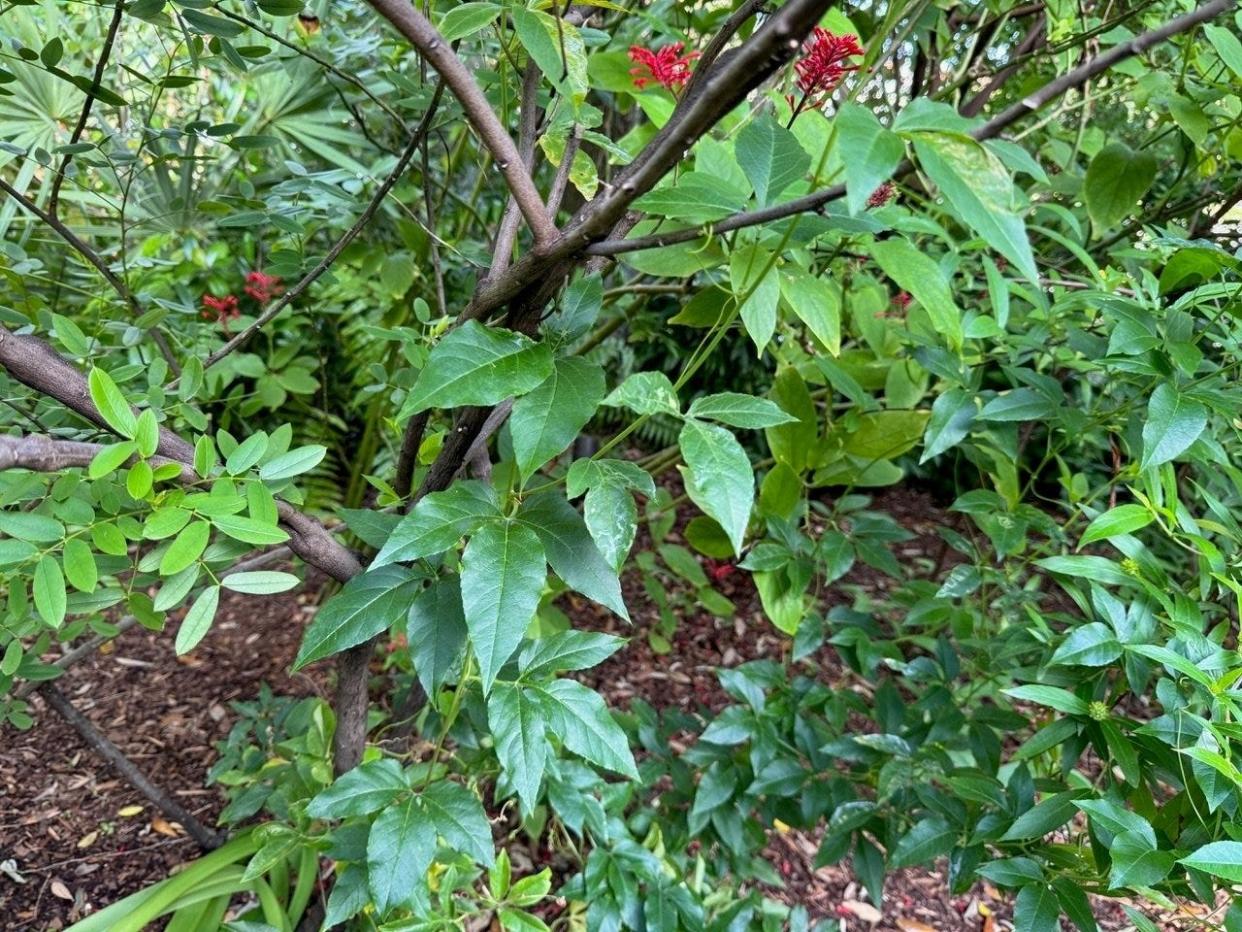
The Garden Club of America presents its prestigious Montine McDaniel Freeman Medal each year to a native plant of exceptional beauty, interest, and importance to gardens across the country.
The winner for 2024 is maypop (Passiflora incarnata), which happens to be our wonderful native passionflower. This fast-growing perennial vine climbs trellises, arbors, fences, or neighboring trees with strong tendrils and will cover large areas in a short period of time. It prefers full sun to part-shade and thrives in a variety of soils, producing the most glorious, wonderfully fragrant violet purple flowers in spring and summer.
These intricate blooms attract a variety of bees, insects and pollinators as well as hummingbirds, which come for the abundant nectar. Maypop is also the larval host plant for the zebra longwing, Gulf fritillary, red-banded hairstreak and Mexican butterflies. This wonderful native is a must-have in your garden for fragrance, color, beauty, and butterflies — the exquisite blossoms will never cease to amaze you.
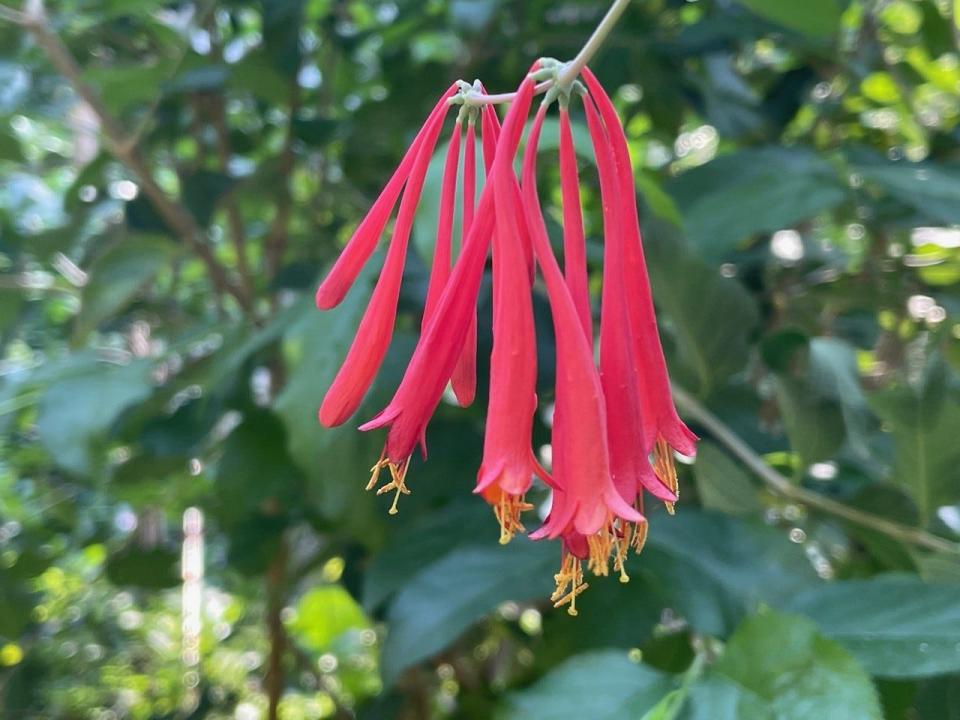
Last year’s Freeman Medal went to another terrific native vine, Coral honeysuckle (Lonicera sempervirens). This honeysuckle is found throughout much of the eastern United States as well as throughout the state of Florida.
Wonderful coral-red tubular flowers appear in great profusion each spring and blossoms continue sporadically throughout the year. Hummingbirds heading north on their migratory paths are delighted to sip on the sweet nectar before and during their journeys. The bright red flowers are magnets for swallowtail butterflies and numerous other pollinators, and the small red berries that follow are loved by thrushes, orioles, catbirds, and mockingbirds. This is easy to grow in full sun or partial shade and is well behaved on a trellis or arbor.
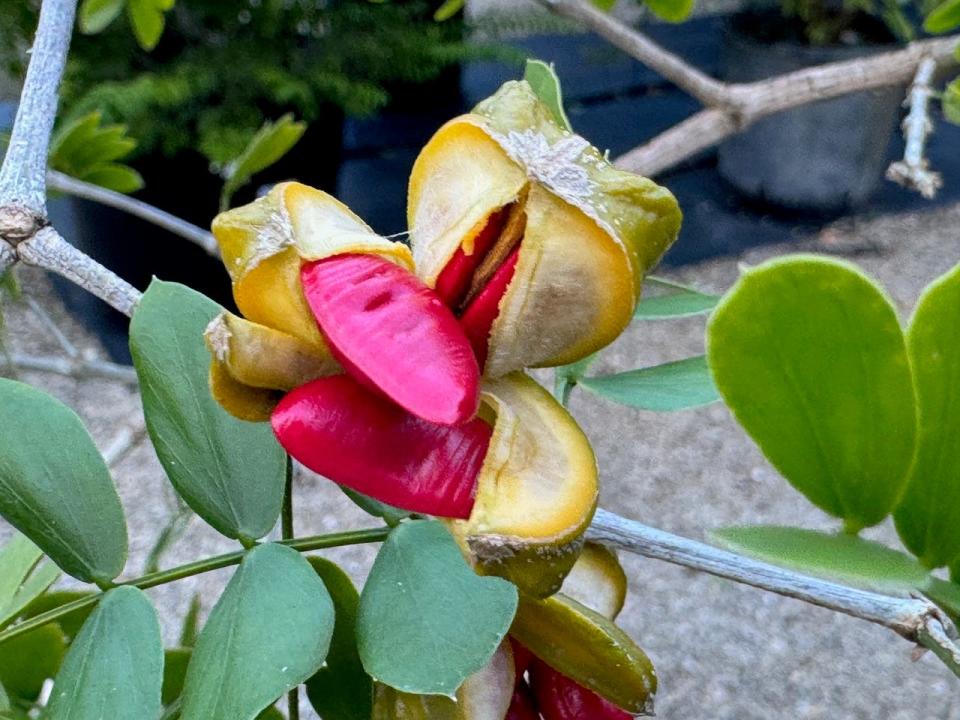
For 2025, the distinguished and regal lignum vitae will be a new contender for the Freeman Medal. Lignum vitae (Guaiacum sanctum) also is known as the Tree of Life. This beautiful, slow-growing, drought- and salt-tolerant small tree grows from 10 to 15 feet, and has shiny, dark green, pinnately compound evergreen foliage. The exquisite purple flowers with bright yellow stamens are followed by yellow fruit pods that split open to reveal lacquer-red seeds; the combination of red and yellow is quite beautiful, and these fruits often appear while the purple-blue flowers are still on the tree, creating an amazing effect.
The tender new foliage provides larval food for the rare and beautiful lyside butterfly, most often found in the Florida Keys, but sometimes seen here in southern Florida. Birds love the seeds and skipper butterflies and other pollinators frequent the flowers.
Lignum vitae’s wood is extremely hard, heavy, and resinous, so dense that it sinks in water. Its exceptional qualities made it very valuable, with many specialized uses including bearings for boats and machinery. Because of the lignum vitae’s resin, such ball bearings were self-lubricating. Because of its unique properties, the tree was over-harvested to the point of near extinction in the wild and is now listed as a Florida state endangered species.
Fortunately, one privately owned Florida key retained its population and this is now the Lignum Vitae State Park, accessible only by boat. Lignum vitae is being propagated in cultivation and is now widely available in nurseries that specialize in native plants.
The gnarled trunk and tidy canopy makes this a wonderful ornamental specimen tree, deserving a place of distinction in any garden. The most profuse flowering is from April to June, but older trees will retain flowers year-round. This is quite cold-sensitive and grows only as far north as coastal Palm Beach County, so we are lucky to be able to include it in our landscapes.
It provides a wonderful formal effect if placed on either side of an entryway or near a wall or arbor. It makes a beautiful potted specimen as well, lasting in a container for several years. Give this remarkably unique and valuable tree a spot of honor in your garden — it will be a gift for the present and will become a legacy for future generations.
These are just a few of the wonderful natives you might consider adding to your landscapes, even if you don’t think you have room. The honeysuckle and maypop vines can be planted at the base of trees or palms and will provide you with wonderful blooms and fruits that will support our birds and pollinator populations.
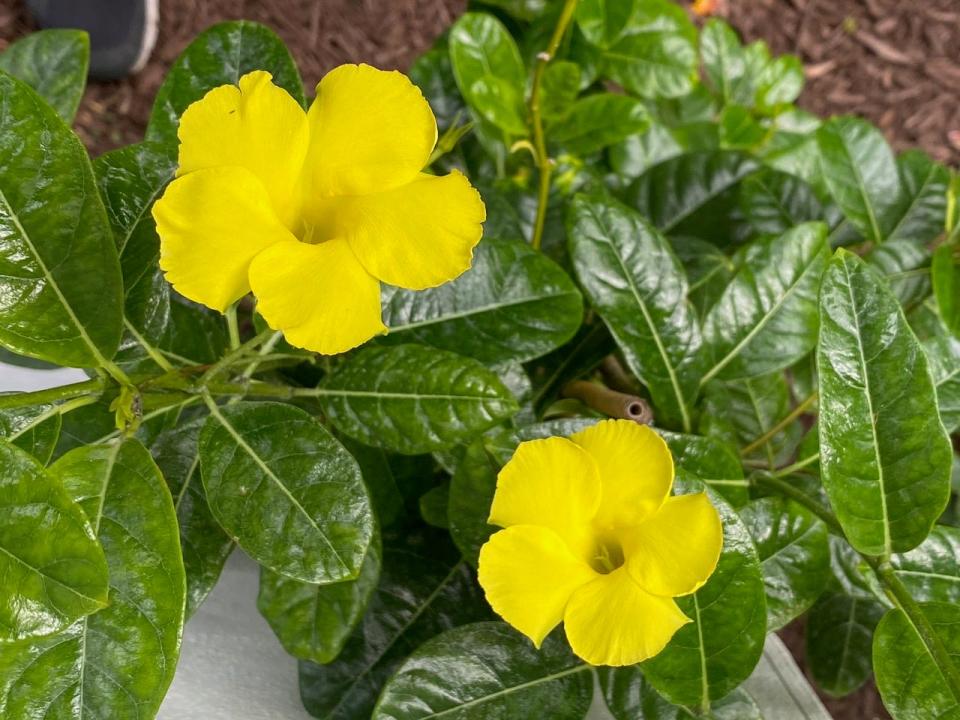
Other great native vines include the brilliant yellow wild allamanda (Pentalinon luteum), gorgeous blue clustervine (Jacquemontia reclinata), lavender-pink railroad vine (Ipomoea pes-caprae), and the wonderful tough-as-nails peperomia, which has a beautiful variegated green/white form. They are all easily grown and require no pesticides or fertilizer.
And as long as we’re on this hot topic, and since many still feel the need to apply chemicals to their landscapes, let’s reconsider the pros and cons of pesticides. We’ll start with the cons:
Pesticides used on our trees, hedges, shrubs and lawns are almost always neonicotinoids. Developed in the 1980s, neonicotinoids are systemic neurotoxins that attack insects’ nervous systems, causing paralysis and death. As systemics, they travel throughout the plant’s roots, leaves, stems, bark, flowers, nectar and pollen, making every part of the plant poisonous. They are highly toxic to all insects, killing bees, butterflies and beneficial pollinators as well as fish and other aquatic invertebrates. Neonics are also widely applied to the seeds of corn, wheat, canola, oats, and soybeans, so you are ingesting them anytime you eat food containing GMOs.
Neonicotinoids accumulate and persist in the soil for years. They are water-soluble and readily leach into waterways where reported levels routinely exceed the intended dose. Concentrations in nectar and pollen impact colony reproduction in bees.
Consumption of even small amounts of coated seeds causes mortality in birds and mammals.
Neonicotinoids have been definitively linked to cancers and neurological disorders including Parkinson’s, which is the fastest growing neurological disease in the world. Cases of Parkinson’s more than doubled between 1990 and 2015, from 2.6 milllion to 6.3 million. It is interesting to note that neonics were introduced in the late 1980’s.
We are in the midst of an insect Armageddon. We have lost over 50% of our insect populations since 1975. How many butterflies have you seen lately on Palm Beach? Quite simply, we need insects to survive; without them, we humans will cease to exist.
OK, to be fair, we now have to list the pros of these insecticides:
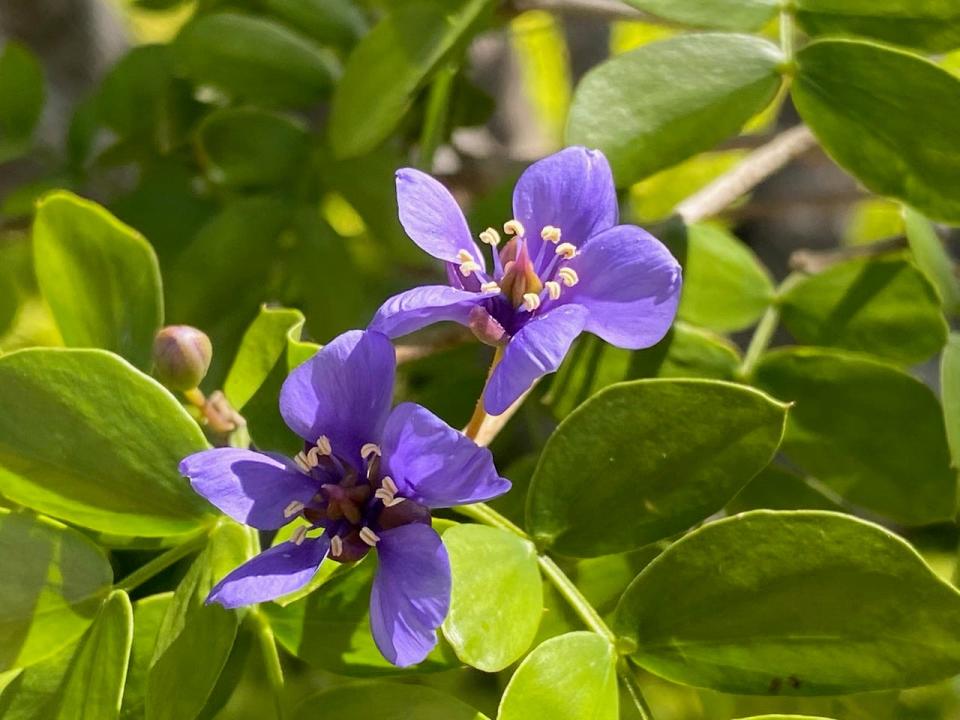
If you hate your neighbor’s dog, he/she has a far better chance of developing cancerous tumors if you apply neonics to your lawn, especially if you do so on a windy day when the drift is likely to get on his lawn, too.
If you hate your in-laws (or neighbors) invite them over right after you’ve had your yard sprayed. Tell them that awful smell is just their imagination and all those silly warnings about Parkinson’s are just well, silly.
In 2020, the PNAS (Proceedings of the National Academy of Sciences of the United States) published the following: “Current use of neonicotinoids has been found to pose a broader risk to biodiversity and entire food webs than previously recognized. We believe that serious efforts must be made to decrease the scale of their use.”
This was four years ago and neonicotinoids are now the most widely used pesticides in the world. They were banned in the EU in 2018. We might be wise to eliminate them here and try to protect our little piece of paradise in Palm Beach.
This article originally appeared on Palm Beach Post: Maypop plant is Garden Club of America's honored choice for 2024

